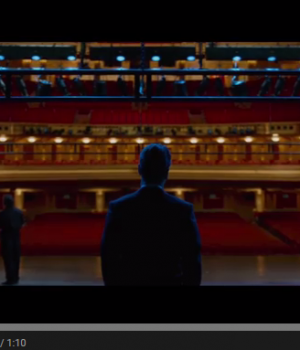Twitter taps into two key human needs: connection and collection.
It is in our genes to want to connect, collaborate and share ideas and emotions. We want to be heard and acknowledged for the information we have gathered. Also, whether it is comic books, cars or art, humans have a wild enthusiasm to collect things. We collect in order to establish our identity.
Incorporating these two needs has been a key to Twitter’s success. But is one outweighing the other?
When I first started using Twitter and was mainly following people and being followed by a few, the level of conversation and collaboration was high. My new friends and I had fantastic discussions on a range of topics. I was a fan: I saw the benefit of Twitter.
However, as my connections grew the level of collaboration dissolved as I became obsessed with getting more followers. Before I knew it the scales had tipped; I was more interested in collection (quantity) than in connection (quality).
I let one of my instincts get the better of me as I lost sight of why I was using it. And I am sure I am not the only one.
How can we maintain the balance between connection and collection, thereby maximising Twitter as a collaborative platform? One way would be to remove the follower count from public view. This may help make us focus more on connection than on collection. However, without a social hierarchy or the ability to display our identity, Twitter wouldn’t be as distinctive; you might as well use the subject line in an email.
Instead of removing our “identity” altogether, I believe the follower count should be replaced with a more rational system that displays the type of influencer you are on Twitter. Think Google PageRank™ for Twitter. Your rank would be based on how much you connect, collaborate and share as opposed to how many followers you have.
There are some interesting analytics tools out there, such as Twitalyzer, that let you analyse a person’s influence, but would integrating such technology be the key to making this platform even more collaborative? I think so, because it would make us focus on the value of Twitter, not its superficiality.
Matt Leeburn is co-founder and CEO of Interaction Dynamics and director of Click Logic. He has extensive experience in new business development, marketing, behavioural economics and digital strategy. Follow him on Twitter@intdynamics.
Image by MattJhsn





![Strategic Alliances with Simone Novello [FREE INFOGRAPHIC]](https://anthillonline.com/wp-content/uploads/2015/08/Capture6-300x194.jpg)
![How did Sean Clark build a $300 million turnover company from a $500 AdWords investment? [CHEAT SHEET]](https://anthillonline.com/wp-content/uploads/2016/03/SEAN-CLARK-cheatsheet-NSFU-02.pdf-Box-2016-03-16-14-43-21-100x75.png)
![Seven steps to crafting the perfect email, with James Tuckerman [FREE REPORT]](https://anthillonline.com/wp-content/uploads/2015/08/7-steps-cheatsheet-3d-cover-nuova--100x75.png)
![Networking is for suckers… master Inbound Marketing [FREE REPORT]](https://anthillonline.com/wp-content/uploads/2015/03/inboundreloaded-100x75.png)
![Five essential things to get right if you want to raise capital, with Bryan Vadas [FREE CHEAT SHEET]](https://anthillonline.com/wp-content/uploads/2015/08/vadas-3d-cover-01--100x75.png)
![How to market your business when you don’t have a business yet [CHEAT SHEET]](https://anthillonline.com/wp-content/uploads/2016/01/oli-gardner-memes-02-100x75.jpg)



![How to make your own festive season video from your company [VIDEO]](https://anthillonline.com/wp-content/uploads/2013/12/ANthillXmas-300x350.jpg)
![The Gaddie Pitch in three simple sentences with Antony Gaddie and James Tuckerman [CHEAT SHEET]](https://anthillonline.com/wp-content/uploads/2015/08/GADDIE-PITCH-updated-3D-cover--300x194.png)
![How to zig when everyone else is zagging, with Julio De Laffitte [CHEAT SHEET]](https://anthillonline.com/wp-content/uploads/2015/08/Capture2-100x75.jpg)

![How to give good headlines, and create emails that get opened [CHEAT SHEET]](https://anthillonline.com/wp-content/uploads/2013/11/7-steps-cheatsheet-3d-cover-nuova--100x75.png)
![How to secure lucrative sponsorships in five steps [CHEAT SHEET]](https://anthillonline.com/wp-content/uploads/2016/02/jackie-fast-meme-04-100x75.jpg)
![New Zealand’s Xero eyes US IPO, further disruption as subscribers increase [INFOGRAPHIC]](https://anthillonline.com/wp-content/uploads/2014/07/sruuuuujana-212x194.png)
![Ever wonder if your ‘content marketing’ is really just crap? You gotta see this! [INFOGRAPHIC]](https://anthillonline.com/wp-content/uploads/2014/08/content-100x75.jpg)
![7 Business Lessons From Game of Thrones [INFOGRAPHIC]](https://anthillonline.com/wp-content/uploads/2014/10/infographic-games-of-thrones-041-100x75.jpg)
![How to build your own Media Empire… In seven steps with Nathan Chan [INFOGRAPHIC]](https://anthillonline.com/wp-content/uploads/2014/10/Nathan-Chan-Infographic-e1413419529176-100x75.jpg)
![5 Business Lessons From Tinder [INFOGRAPHIC]](https://anthillonline.com/wp-content/uploads/2014/10/Tinder-Elegant-Infographic-100x75.jpg)



